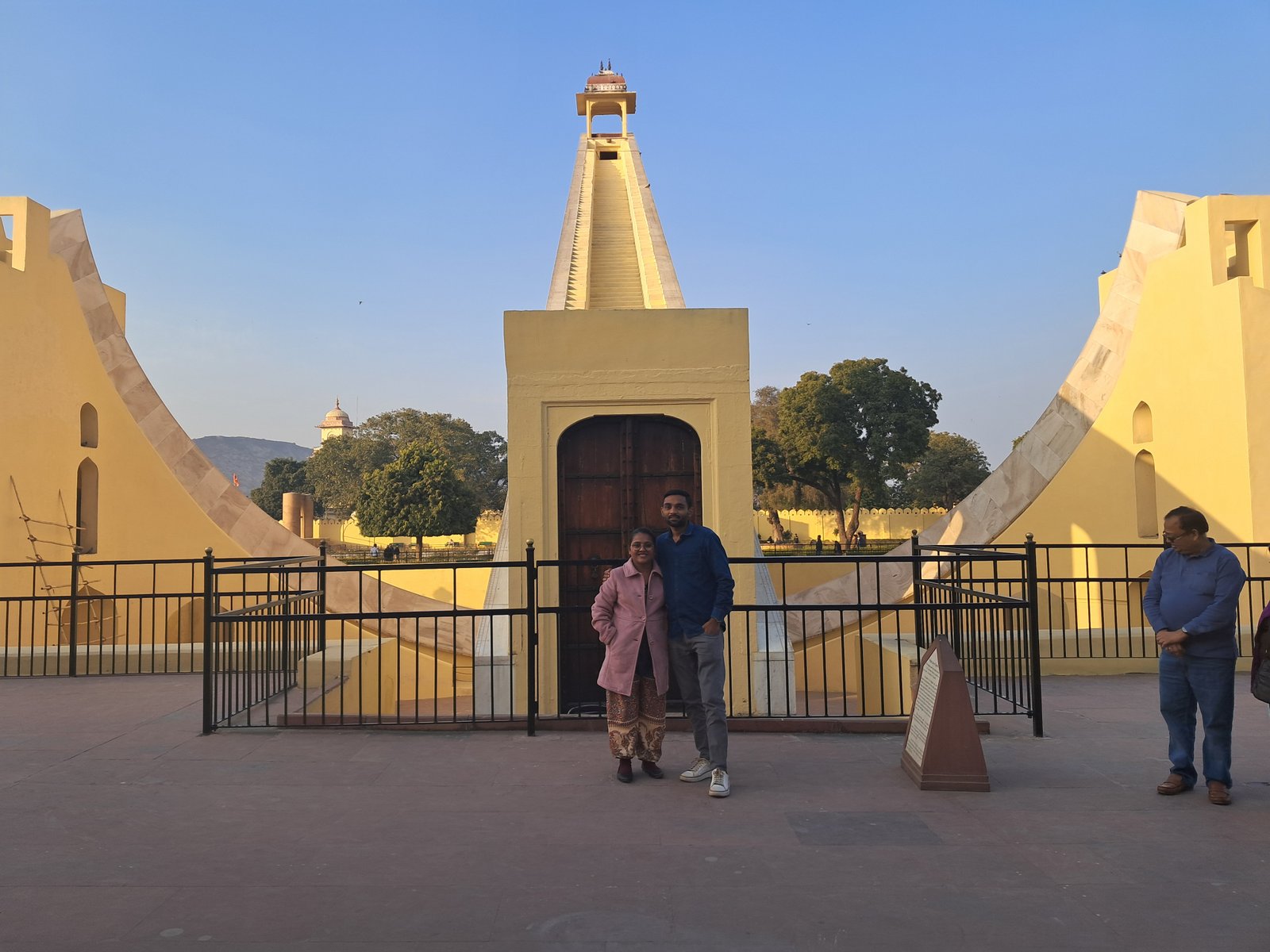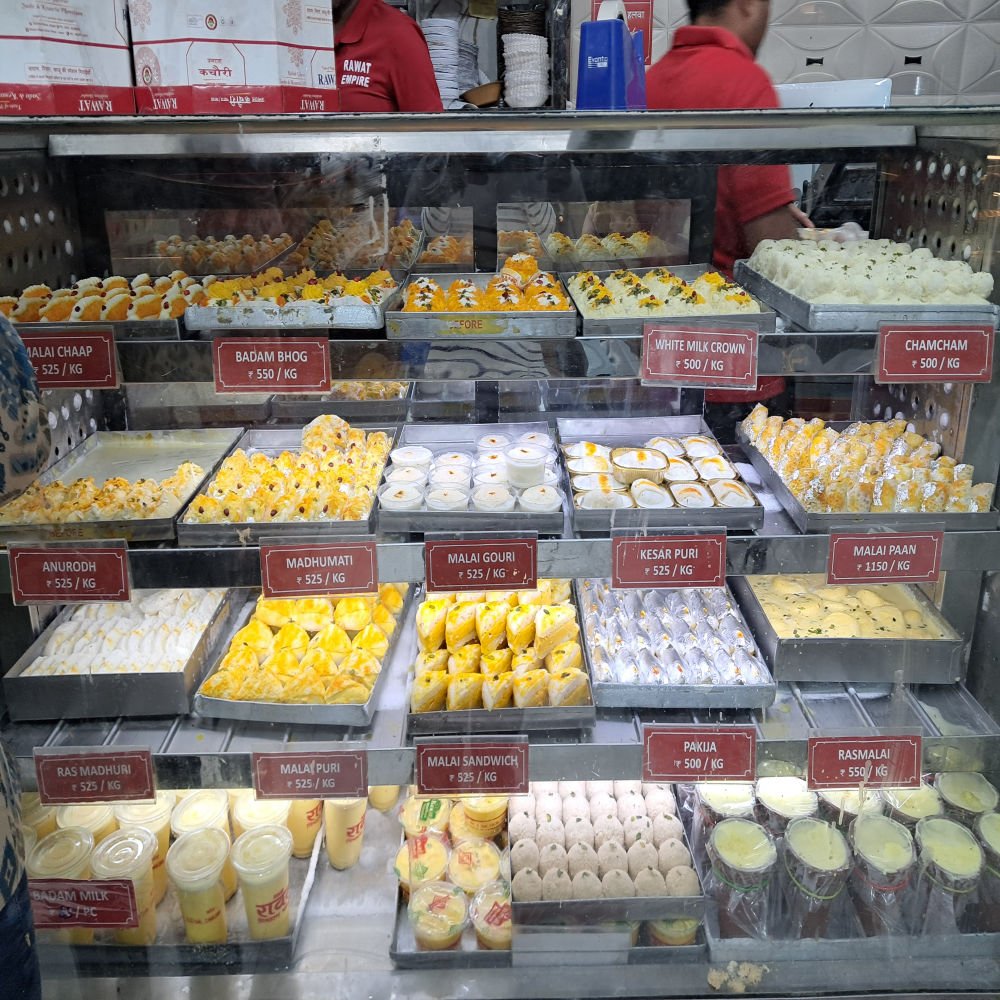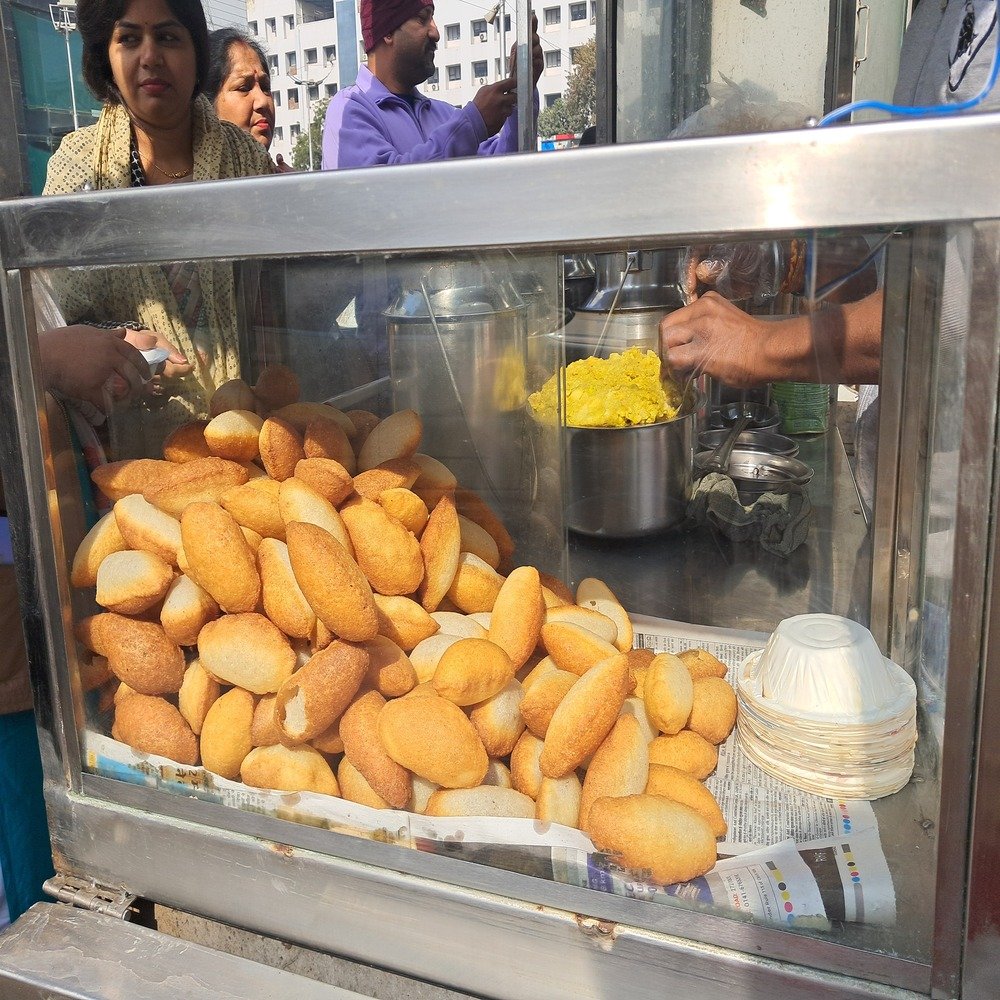Our trip to Jaipur was completely spontaneous. Due to a training session we were attending, we decided to head to this beautiful city. Both of us avid travellers, we seized the opportunity to arrive two days early, thanks to the weekend. To our luck, the training got postponed, granting us an extra day to explore the vibrant city of Jaipur. Although my itinerary might not be the typical guide for tourists, it’s filled with insights into local places, delicious food, must-see attractions, and tips about navigating the local markets. Drawing from my experiences with the locals, the destinations, the travel times, and the duration needed to fully enjoy each experience, I’ll share an itinerary designed to help you experience the best of Jaipur, Jaisalmer, and Agra. For each monument and site I visited, I’ll provide a detailed story in the “Mystic India” section of this website, where you can dive deeper into the rich tapestry of these places.
Welcome to your virtual journey through the heart of India, guided by my personal experiences and stories. Imagine we’re setting off together on an adventure that takes us through the bustling streets with delicious street food, magnificent forts, and breathtaking landscapes of some of India’s most iconic cities: Jaipur, Jaisalmer, and Agra.
These destinations, nestled in the northern and western parts of India, each boast their unique food, culture, language, attire, and climate. However, they all share one common trait: warm hospitality from the heart, accompanied by beautiful smiles, and colourful and loving atmospheres.

We embarked on our journey from Mumbai late Friday night, arriving in Jaipur by early Saturday morning. Our plan was to maximize our weekend for exploration. Greeted by unexpectedly low temperatures, a sharp contrast to Mumbai’s warmth, we found ourselves unprepared for the chill. Consequently, we ventured out after 10 a.m. the next day, when it was less cold. My first impression of Jaipur? It’s a haven for food lovers and bursts with colour – an impression that will undoubtedly linger in my heart.
After extensive Google searches and conversations with locals, including autorickshaws and taxi drivers, we curated a list of must-visit eateries and attractions. Names like LMB, Rawat Kachori, and Chokhi Dhani came up repeatedly.

Day 1 : Hawa Mahal and Chokhi Dhani
Our day started with us renting a bike from the Gaurav Tower area and heading to the main market near Hawa Mahal for breakfast at LMB (Laxmi Mishthan Bhandar), a renowned Jaipur eatery. We enjoyed Pyaz Kachori, Rasmalai, Ghewar, and Malpua, taking some sweets with us for later. The Rasmalai was especially memorable. We then visited Hawa Mahal, where a guide shared the architecture and history with us. After exploring the market, we made our way to Chokhi Dhani, situated about 11km away. Keen to experience Rajasthani cuisine and culture, we arrived early. The entrance fee was around 900-950 INR per person, but it was worth it for the experience that started with a traditional welcome. Inside, it felt like a Rajasthani village with activities like mehndi, tea in kulhads, and enjoying Makke di Roti with Lahson (garlic) Chutney. We shopped in the mini-market, played in the maze, and tried various rides like the elephant, camel, and bullock cart, rounding off with Rajasthani music by the fire. We ended the day with dinner, choosing the traditional seating in a cosy, Rajasthani-style room, impressed by their unmatched hospitality.






Day 2: Albert Hall Museum, City Palace, Jantar Mantar, and some shopping
Tip: carrying a student ID can get you great discounts on entry fees. Our first stop was buying sweaters from the National Exhibition on Handicrafts, where we found quality items at reasonable prices. The Albert Hall Museum fascinated us with its collection of artefacts and the building’s architecture. At the City Palace, we spent a few hours exploring, appreciating that the tours are accessible to disabled visitors. What stood out was the palace’s support for royal craftsmen, recognized by national honors, allowing us to meet artists and buy authentic crafts. This “Rajashraya” the tradition of promoting art and craft has been sustained across generations by the royal family.



Jantar Mantar
We go to Jantar Mantar, Jantar Mantar in Jaipur is an astronomical marvel, a collection of nineteen architectural astronomical instruments built by Maharaja Sawai Jai Singh II. This UNESCO World Heritage site, with the world’s largest stone sundial, fascinates visitors with its precision and grandeur in measuring time and celestial events.
Jantar Mantar in Jaipur is one of the largest observatories in the world, comprising remarkable stone assemblies that help to interpret the position of celestial bodies and calculate local time. Enumerated as a World Heritage Site by UNESCO, Jantar Mantar attracts tourists, historians, astronomers, architects, mathematicians, and geographers. The collection of nineteen astronomical instruments in Jantar Mantar allows the observation of astronomical positions with the naked eye. The monument is an exemplification of architectural innovations that were built on ideas from different religious and social beliefs in 18th-century India.

City palace
Kindly Note: Chandra Mahal is a private area and is also a functional palace, it is used by the Royal Family of Jaipur hence the availability of all the areas in both tours will have to be confirmed on the day of the visit at any of the 2 ticket counters at the City Palace.
(Important Notes: For visually impaired and wheelchair users, discounted rates apply as above. Plus free admission for one carer and 1 free audio guide per ticket. Tickets may be upgraded for a higher value ticket and the price will be adjusted, as long as you do it on the same day or the next. Upgrades do not apply to the Royal Grandeur Special Ticket)



Our day wrapped up at Gulabji ki Chai, a beloved tea stall in Jaipur. The cool breeze, the aroma of tea and Bun Maska, along with the crowd soaking up the evening, creates a truly magical atmosphere. Heading back to our hotel, we carried with us a bag full of memories to cherish.
Day in Agra

Our training meant we enjoyed Jaipur in the evenings, but since the 26th of January was a holiday, I had booked train tickets and Full Moon Night view tickets for the Taj Mahal before coming to Jaipur. On the 25th of January evening, we left for Agra by train. Around 9-9:30 pm, we reached Agra. There was too much fog; we couldn’t see even a few feet ahead. As soon as we reached Agra, we headed towards the Shalimar Gate for the Taj. Our hotel was just near that gate, a blessing in disguise because of the cold weather. We didn’t need to travel again to the hotel after sightseeing, and we were happy about that. We reached the Taj and entered through high security, but couldn’t see the mesmerizing view amidst the fog. I felt very sad; it was us who chose the wrong time to visit the Taj. We asked security for the best time to enjoy the night view; they told us March and April are best for a bright night view. We decided to come back again in a suitable season. We went back to our hotel.
The next morning, we enjoyed breakfast. Since it was a Friday and the Taj Mahal was closed on Fridays, so we visited Agra Fort and the Baby Taj instead.



( Note: Taj Mahal is closed every Friday for maintenance, so plan accordingly)
In the evening, we viewed the Taj Mahal from Mehtab Bagh and also saw the unfinished work/plinth of the Black Taj. While returning to the station, we visited the market, had dinner, and bought the Petha from the oldest and famous Gokul Petha shop. I also bought pyjamas for winter, which were of really good quality and affordable. We then took the train and came back to Jaipur.
Agra Fort, a UNESCO World Heritage Site, stands as a testament to the grandeur of the Mughal Empire, with its origins dating back to the 16th century under Emperor Akbar. Initially constructed with red sandstone, this sprawling fortress combines the might of military structures with the intricacy of Mughal architecture. Later, Emperor Shah Jahan, known for his love of white marble, added to its beauty by incorporating marble buildings within its premises. A lesser-known fact about Agra Fort is its strategic design, which includes a moat and two outer walls, showcasing the defensive acumen of its creators. One of the architectural marvels within the fort is Diwan-e-Am, where I took a photo near Birbal’s seat, an area famed for its exquisite columns and detailed artwork, reflecting the sophisticated Mughal architectural style that blends Islamic, Persian, and Indian elements seamlessly.


Day 3: Forts and Palaces of Jaipur

We started our day with Amer Fort, Where Hritik Roshan’s film was shot, it has one of the largest Sheesh mahal in Asia, wonderful architecture, water Management, use of natural sources and science for daily use like making of hot water bathtubs etc it’s a blend of science and art mesmerise tourist. You can get to Amer Fort either by an elephant ride or an auto-rickshaw, but honestly, walking up those few steps is not only a feast for your eyes with photogenic views at every turn, it’s also free and saves you a bunch of time. After exploring the fort, the Tourism Department’s taxi can whisk you off to the marketplace. This is where the fun begins with shopping for authentic handlooms and handicrafts. While there are plenty of shopping options in the city, including government-authorized shops, my tip would be to steer clear of impulsive buys and not fall for misleading advertisements.
Food Culture









Our visit to Amer Fort marked the last day in Jaipur, and it was an absolute delight. Since we were in town for training, we had a couple of days before and after to explore Jaipur to the fullest. Even during the training days, I made the most of the evenings, diving into shopping, trying out various restaurants and food stalls, and savouring the diverse Dal-Batis and a variety of Pani Puris like Suji Puri, and much more. Jaipur, in my opinion, is a paradise for food lovers. It offers everything from street food stalls to dining in palace-like heritage hotels, serving up a wide range of foods from traditional Rajasthani dishes to international cuisines. My stay was memorable, and I absolutely loved every bit of it. We left for Jaisalmer by train that night. Stay tuned for my next blog where I’ll take you through the wonders of Jaisalmer.

